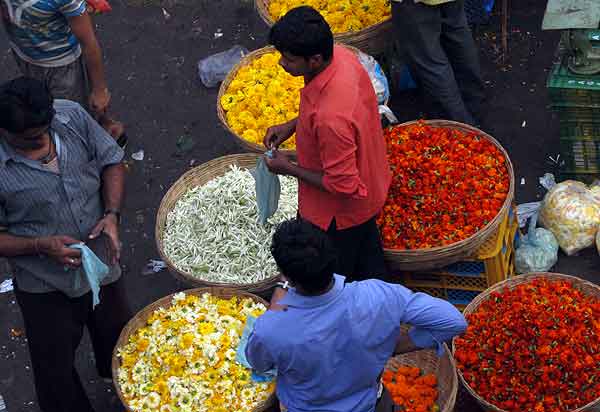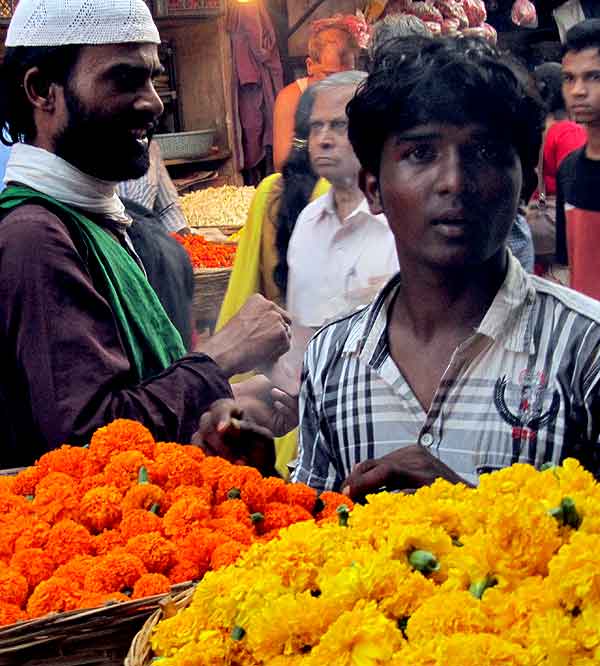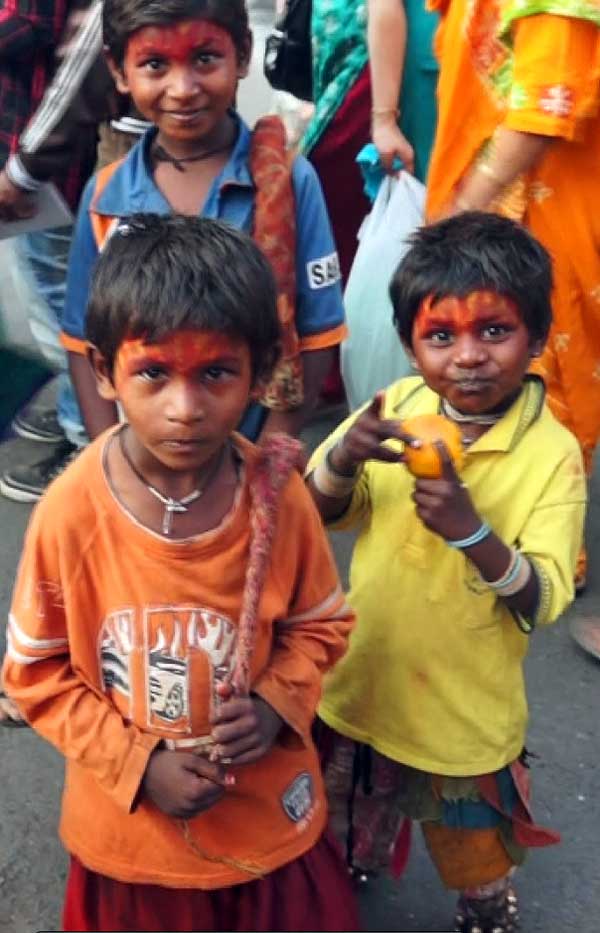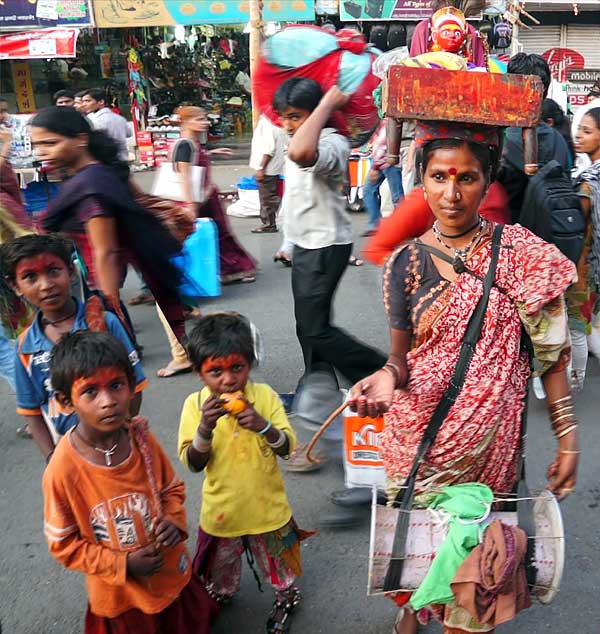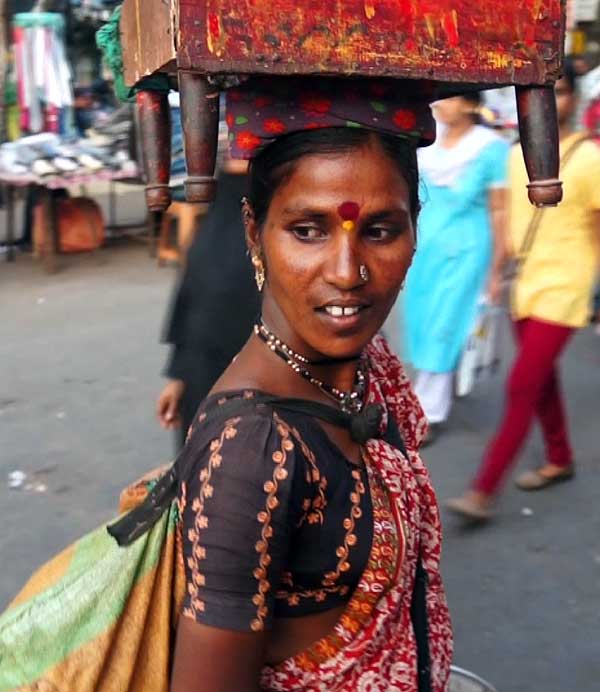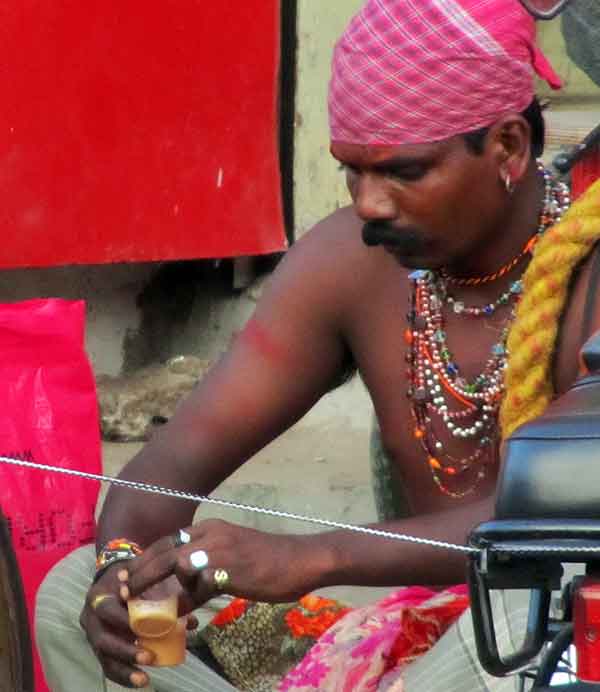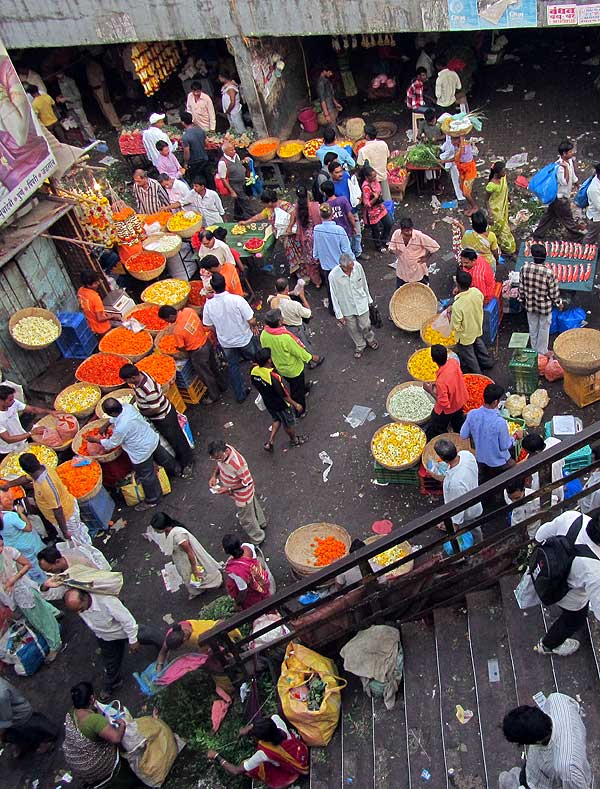
What’s in all the brilliant-colored baskets? Spice? Dye? After witnessing the most amazing train-boarding process ever, we descended from the “flyover footpath” and found ourselves behind the Dadar train station. As we cautiously came down the dilapidated stairs, we saw a vast, chaotic marketplace bustling in all directions and under the highway overpass.
It was a huge flower market with endless baskets containing every color, and shifting fragrances of marigold, rose, mint, carnation, jasmine, lilies-of-the-valley, something like lilac, and more. In places it just smelled very green. A few steps away the scent of sewage rose to overpower the flowers. Everything was overpowering: the noise, the smells, the colors, the commotion, the press of the crowd. Someone accidentally kicked my toe and made it bleed. I looked down at my dusty foot, a thin buffalo skin away from the filthy ground, and wondered what germs might find their way into the wound. The crowd swept me forward.
I sent home a few photos and got back questions that surprised me: “Who has the money to buy flowers? I can hardly spend the money to buy cut flowers. Do they just put them in vases in their homes? If it’s just for the wealthy, would it be their help going to make the purchases?”
The questions made me realize how much I take for granted. Because I’ve been to India so many times, and read so many books about and taking place in India, I forget that much of what I’ve learned isn’t common knowledge. Cow manure patties are used as fuel; betelnut is chewed with lime; the backs of all trucks say “Horn OK Please;” children call strangers “auntie” and “uncle;” and flowers are offerings to the gods. Even a man with only ten limes to sell will have three fresh flower heads on the corner of his spread-out rag, as an offering.
I’ve been fascinated by India since the late 70s, when I had daily lunches at a tiny Indian joint in Sunnyvale. That led to my study of Indian cooking and reading Indian cookbooks padded with details of regional family life in India. I’ve since read so many books about the country, both fiction and non-fiction, that I forget I might be a little more familiar with some of the country’s peculiar customs.
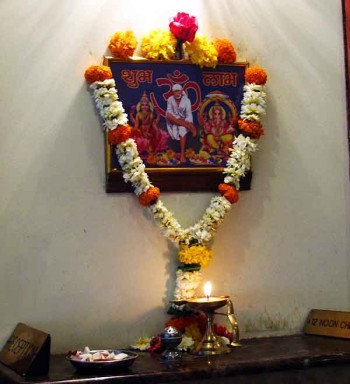

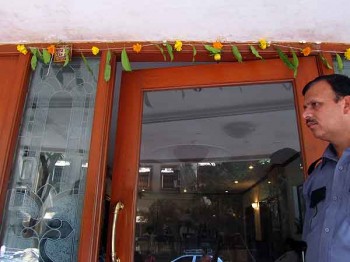
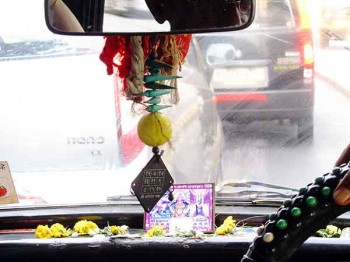
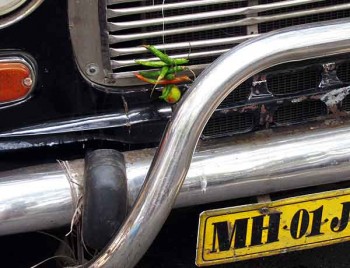
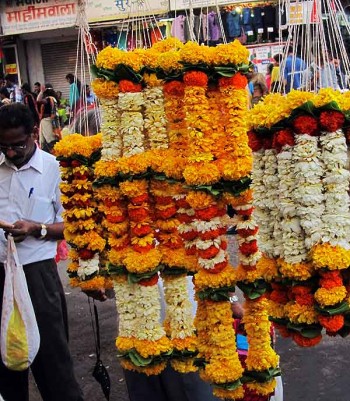
So to answer those excellent questions: everybody buys flowers, rich and poor! Most of the flowers at the market are just the stemless heads. They’re strung in long or short strands in different combinations and offered to the god of choice. Every business, from the biggest bank to the humble man with only a box-top of moldy oranges to sell, displays a flower offering for luck. It may be an elaborate living chandelier of multicolored blossoms strung fresh and fragrant, or a single wilting marigold head. Scrutinize any truck or taxi and you’ll find a string of three fresh carnation or marigold heads and a couple of chili peppers swinging from the front bumper. The police car we rode in so many times this trip had on its dashboard a tiny altar to Ganesha draped with a string of orange flowers.
There’s often fruit, too. An orange, some sliced coconut, a few pomegranate seeds, whatever. So most of the flowers in the flower market are just the blossoms, ready for stringing. Workers sit on the ground everywhere stringing and selling pretty strands.
Our grubby hotel has a long strand over the entrance, rose petals on the lobby floor around candles, a little altar on the front desk, and a small heap of flowers on a front entry step.

